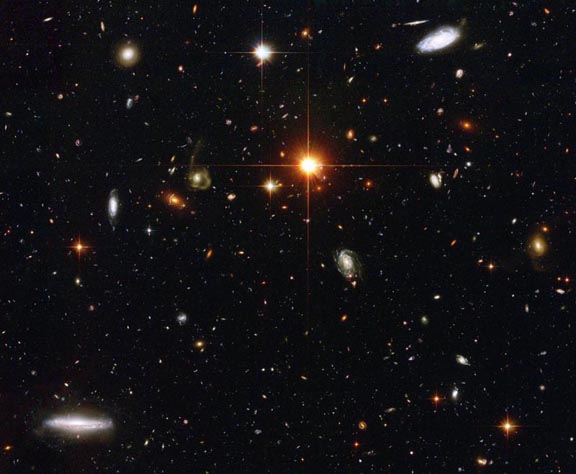Introduction
A non-cosmologist, reading a statement in the press, might find something like this: "A very distant galaxy has just been discovered. It is so far away that the light from it that we see now left the galaxy when the universe was less than 10% of its present age and has been traveling for 14 billion years. The galaxy is 14 billion light years away. The redshift of its light is 5.8." This statement seems confusing. If the galaxy is now 14 billion light years away, it would seem to have been only about 1 billion light years away or so when the light left it. Why did it take 14 billion years for light to travel 1 billion light years? On the other hand if the galaxy was 14 billion light years away when the light left it 1 billion years after the big bang,, was it going at 14 times the speed of light or more? The equations for the relativistic Doppler shift of light would give a velocity of about 96% of the speed of light for this redshift. This set of statements would seem to be puzzling.
In order to understand what is going on, we need to look at concepts of general relativity and to consider the various models cosmologists have developed. We need to know the results of various observations and measurements of cosmological quantities. We need to understand that the popular press may at times oversimplify the descriptions of cosmological findings. There are exciting new developments in cosmology and new tools will bring in a flood of new data in the next few years.
NEXT -->
©
2000-present. Ed Barlow -- All rights reserved.
URL this site: http://www.Cyberstars.com/CosmologyModels
